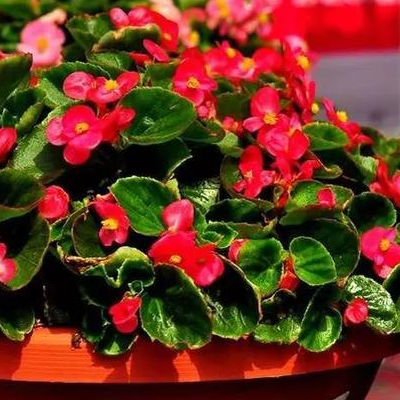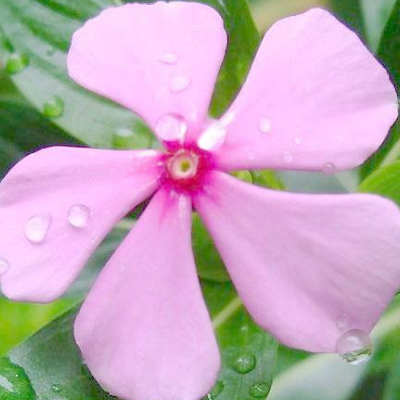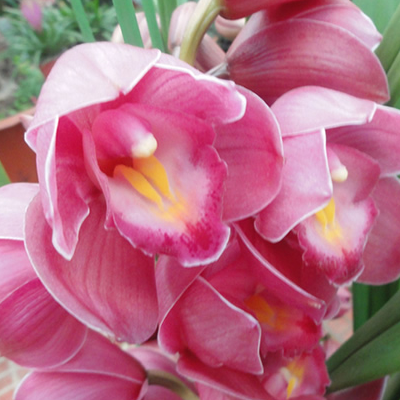How to raise the flowering period and how much is the four Seasons Begonia
Four Seasons Begonia, this plant, is a lot of people like super, this four Seasons Begonia is so attractive, how to raise four Seasons Begonia? What is the flowering period and price of begonia in the four seasons:

How to raise four Seasons Begonia:
1. Direct sunlight can be exposed in spring, but it should be maintained under the condition of all-day shade from April to October, with a little sunshine in the morning and evening.
2. thin fertilizer should be applied frequently during the growing season in spring and autumn. nitrogen fertilizer can be applied twice a month in the growing season, and rotten cake fertilizer can be used. More phosphorus and potassium fertilizer before flowering can promote flowering.
3. watering should be dry and wet, and wait until the basin soil is dry before watering.
4. If you want to promote flowering, picking the heart is essential. You can pick the heart once when the plant grows to 15cm. After the flower fades, the residual flowers should be removed, which can promote branching and allow the plant to give birth to new buds.
Flowering period of four Seasons Begonia: flowering throughout the year
How much is four Seasons Begonia?
If the four Seasons Begonia is just an ordinary seedling, it is usually 50 cents, and if it is planted well and has a flowerpot, the price will be more expensive.
This is the end of the introduction of the breeding method and flowering price of Begonia in four seasons. Please don't miss it if you like it.
How long is the flowering period of the four seasons begonia, and the management of the flowering period of the four seasons begonia / frequent fertilization / sufficient light
The four Seasons Begonia is a kind of flower with beautiful flowers and leaves, which is highly ornamental. This kind of flower is not only suitable for breeding at home, but also suitable for planting in a large area. If you want to talk about the most beautiful moment of this kind of flower, it must be the time of flowering. So how long is the flowering period of the four seasons crabapple? How to manage the flowering period of four Seasons Begonia? Next, the editor will take you to learn about it.
How long is the flowering period of four seasons begonia, October-May
If the four seasons begonia planted in spring, its flowering time is around October, the flowering period will last until May of the following year, and the flowering period of the four seasons crabapple is from the end of autumn to the early summer of the second year. It can almost be said to cover the four seasons of spring, summer, autumn and winter, so it is also known as the four seasons crabapple, which can be said to be very appropriate.
Second, the management of flowering period of begonia in four seasons.
Four Seasons Begonia is a kind of plant with a very long flowering period, but if you want its flowers to bloom for a long time, then the maintenance and management of flowering period should not be careless at all. If it is not managed properly, it is easy to lead to its early withering. The management methods of the flowering period of four Seasons Begonia are described in detail below. Let's take a look at it.
1. Fertilization management
When the four seasons crabapple blossoms, the demand for fertilizer is very high, because flowering will consume a lot of its nutrients, so if you want to keep the flowers open, fertilizer is indispensable. The flowering period of the four seasons crabapple basically needs to be fertilized every 10 days. When applying fertilizer, we should remember that the fertilizer must be diluted with water before it is released, otherwise it is easy to burn the plant and cause the flowers to fall ahead of time.
two。 Watering management
Watering is also a very important part of the flowering period of the four seasons crabapple. The watering of the four seasons crabapple does not have a fixed frequency, and it generally needs to be changed according to the climate. It can be watered when you see the basin soil turning white. Keep the principle of not drying and watering as much as possible, but don't wait until it is completely dry.
3. Light management
Four Seasons Begonia is a kind of light-loving plant, but it is not resistant to strong light, so it also needs to pay attention to its flowering light management. In spring and autumn, the light is not strong, so we can let it receive light all day. When the summer light is strong, we need to pay attention to shade, and it is better to move it to indoor semi-shade.
4. Winter management
The flowering period of the four seasons begonia is throughout the four seasons, but this kind of plant is afraid of the cold, so it needs special attention when maintaining it in winter. It is best to keep it indoors in winter, and it is best to keep the indoor temperature above 15 ℃. In addition, the management of fertilizer and water should also be strengthened in winter, so that begonia can continue to bloom until the temperature rises at noon. We can move it outside to receive a few hours of sunshine, so that it can better survive the winter.
5. Pest management
In the process of flowering management of four seasons crabapple, if improper maintenance of flowers, it is easy to appear diseases and insect pests and other phenomena, this kind of phenomenon is very harmful to the plant, so it must be dealt with in time. Specific treatment methods are believed to be introduced in the article on the prevention and control of diseases and insect pests of the four seasons begonia, and the editor will not repeat them for you.
How can four Seasons Begonia can bloom continuously? maintenance skills of four Seasons Begonia
Four Seasons Begonia, alias four Seasons Begonia, clam Begonia, beautiful plant appearance, green leaves, delicate flowers, suitable for court, corridor, case table, balcony, conference room table, restaurant and other decorations. Potted plants have been watched for thousands of years. Its flowering period is so long that it can blossom almost all the year round, but it is more popular in late autumn, winter and spring. Colors are orange, pink, pink, white, etc., cold season put a few cases, indoor spring is full of, spring and summer on the balcony eaves, more lively and lively. Then how can the four seasons begonia blossom continuously? Let's take a look at it with editor wed114.
Pictures of crabapple flowers in four seasons
First, brief introduction of four Seasons Begonia
Four seasons begonia, alias; four seasons begonia, clam crabapple, Latin name: Begonia semperflorens Link et Otto. Begonia, Begonia is a fleshy herb. Roots fibrous; stems erect, fleshy, glabrous, base much branched, leafy. Leaves ovate or broadly ovate, base slightly oblique, margin serrated and eyelashes, bright green on both sides, but main veins usually reddish. Originally from Brazil. Begonia is the most common and cultivated species of begonia. Graceful, delicate and bright leaves, flowers in clusters, blooming in the four seasons, and with a slight fragrance, is one of the main potted flowers for indoor and outdoor decoration. People apply it to the layout of flower beds, and the effect is excellent. With the emergence of some relatively heat-resistant varieties, Begonia is likely to become one of the most important flower beds in China, with the advantages of round plant type, many and dense flowers, easy to plant with other flower bed plants, long ornamental period and so on. so it's becoming more and more popular. It is generally cultivated in spring and autumn.
Pictures of crabapple flowers in four seasons
Second, how can the four seasons begonia blossom continuously?
1. Moisture
Spring and autumn is the growth and flowering period, the soil needs to contain more water, watering should be timely, keep moist. In summer and winter is the semi-dormancy or dormancy period of the four seasons begonia, the moisture can be less, the basin soil is slightly drier, especially in winter, the basin soil should always be kept slightly dry.
2. Sunshine
Four Seasons Begonia can be exposed to direct sunlight in early spring. With the increase of sunshine, it should be shaded properly. After Qingming Festival, the potted plants can be moved to the outdoor shade shed for maintenance. East China should be maintained in full shade from April to October, but it is best to see a little sunshine in the morning and evening. After arriving at Frosts Descent, it is necessary to move into the indoor anti-freezing to keep warm, and the indoor furnishings should be placed in the sunny place.
3. Fertilization
During the spring and autumn growth period, it is necessary to master the principle of applying thin fertilizer frequently, mainly applying rotten organic thin fertilizer water or inorganic fertilizer soaking solution without peculiar smell. More phosphate fertilizer is applied in the budding and flowering stage to promote the gestation of buds. When the growth is slow in summer and winter, less or no fertilization can avoid rot due to tender stems and leaves and weakening heat and cold resistance.
4. Temperature
In the high temperature season in summer, measures should be taken to avoid strong direct light and cool down to create a small environment below 30 ℃. As long as the winter temperature is kept above 10 ℃, it can survive the winter safely.
5. Choose the right soil.
The choice of cultivation soil on the four seasons begonia? U > Lip gloss invades the cool plaque mold Huixin Bengzhu Mei Nai Meijin L Mu Na inferior Φ pen timid enzyme forged Ba Gang Tar "by the immortal Wokang dusk by Chen , the poor silly model is better than the hoop Suyou, the Wokang tomb owes the polder, the remains, the emperor buys the L Na " juvenile field? / p >
6. Reasonable lighting and ventilation
In early spring, the four seasons crabapple should be placed in the sunny position of the balcony, and always maintain and pay attention to ventilation. And multi-directional observation, a long time should be 180 °in place to change the fragrance of the flowerpot. After the late frost, the four seasons crabapple should be transplanted to a position where there is only scattered sunlight. Watering should not be excessive, wetting is better, and thin liquid fertilizer of nitrogen, phosphorus and potassium should be applied every 1-2 weeks.
7. Humidity is particularly important
The warm and humid environment of the four seasons crabapple can not be changed. During its growing period, it should be placed in a cool, ventilated place with scattered light for maintenance. In summer, watering should be controlled, fertilization should be stopped to prevent leaves from yellowing due to sunlight, and water should be sprayed to the page and the surrounding ground every day to ensure the surrounding humidity and cool down.
Pictures of crabapple flowers in four seasons
Third, the maintenance methods of multi-flowering begonia in four seasons.
① basin soil should be mixed with rotten leaf soil and pastoral soil, mix well with a small amount of river sand, and add a small amount of cake fertilizer as base fertilizer.
The suitable temperature for ② growth is 20 ℃-24 ℃. It should be maintained indoors in sunny places at ordinary times, and cool and ventilated in summer to prevent strong direct sunlight. The room temperature should be kept above 15 ℃ in winter.
③ watering should grasp the principle of inter-dry and wet, and apply dilute liquid fertilizer or compound flower fertilizer combined with nitrogen and phosphorus every half a month. Watering should be controlled and fertilization should be stopped in summer. It is necessary to keep the basin soil moist in autumn and apply rotten cake fertilizer and water once every 10 days.
After ④ blossoms in spring and autumn, the residual flower and the tip of the tender stem should be removed in time to promote the lower axillary bud to sprout new branches.
⑤ growth period should often spray water to the leaves; after each heart should be suspended for several days to prevent the wound from rotting.
Pictures of crabapple flowers in four seasons
Fourth, disease and pest control of Begonia in four seasons
Begonia is prone to spot bacteriosis under the condition of high temperature and high humidity. At first, dark brown spots appeared on the leaf surface, and gradually spread to a dark brown rib. The same amount of Bordeaux solution can be used to prevent the disease before the disease, and pay attention to improve the cultivation conditions and management methods. In the early stage of the disease, the diseased leaves should be removed and burned in time to prevent re-spread. Summer is the high incidence period of aphids and red spiders, so it is necessary to control them with pollution-free pesticides in time.
Insect pest
Pest control: the main diseases are leaf spot disease, as well as the harm of bacterial diseases, which should be controlled by topiramate, chlorothalonil, Jinggangmycin and so on. Insect pests are mainly various pests that harm leaves and stems, such as slugs, thrips, leaf miners and so on.
Disease
The main results are as follows: (1) the common diseases are powdery mildew, bacterial blight, aphids, powdery shells, red spiders and so on. Prevention and control methods, to environmental control: high temperature and humidity is conducive to the reproduction of bacteria, so close planting should be avoided in cultivation to facilitate ventilation. When planting in greenhouse, if the temperature difference between day and night is large, you should avoid watering in the evening so as not to drop the temperature at night, resulting in excessive humidity and even water vapor condensation.
(2) keep the cultivation place clean: if there are infected plants and leaves, they should be removed and destroyed immediately. Avoid wetting the leaves when watering.
Blight is one of the common diseases of begonia in four seasons, which occurs in flower field and family potted crabapple. It mainly harms the leaves at the base of the stem and near the soil surface. In the early stage of the disease, the base of the stem near the soil was infected with dark spots, which became brown and rotten after expansion. The leaves are infected with dark green waterlogging-like round spots and brown rot when infecting the petiole. In the morning with high humidity, it can be seen that the disease spot has white to light brown filaments. Seriously diseased plants lodge or rot and die. The pathogen overwinters with mycelium or sclerotia in the diseased tissue or in the soil. When Begonia is divided or propagated by cuttings, the wound is caused by the temperature of 20-24 ℃, high humidity or excessive watering in overcast and rainy weather, the pathogen invades and often causes the disease to occur seriously.
Prevention and cure method
(1) remove the diseased leaves in time and strengthen ventilation.
(2) soilless cultivation was adopted. Compost made by retting with enzyme bacteria is recommended for soil cultivation. Select new soil rich in organic matter or pond mud, river mud and so on to prepare basin soil.
(3) disinfect the soil conditionally, use 40% pentachlorothiram or seed-mixed double powder, the dosage is 8g per cup, mix well with the soil and put it into a basin and set aside.
(4) at the initial stage of the disease, 95% Luheng No. 1 was sprayed with 3000 times liquid or 20% methyl rifampicin EC 1200 times, 50% Likuling wettable powder 1000 times, potassium permanganate 1200 times.
(5) after the onset of the disease, 40% pentachlorothiram or seed dressing powder plus fine sand can also be used to form a drug soil of 200 times, with 100g / 150g per plant or pot, once every 10 to 15 days.
(6) the spread of Trichoderma harzianum can be effectively controlled by using cultured Trichoderma harzianum 0.4~0.45kg, adding 50kg fine soil, mixing and sprinkling on the base of the diseased plant. Begonia is sensitive to fungicides, and some new varieties need to be tried before being used on a large scale.
- Prev

How long is the florescence of Catharanthus roseus?
Catharanthus roseus, this kind of plant is super liked by many people. This Catharanthus roseus is so attractive. What is the breeding method of Catharanthus roseus? How long is the florescence of Catharanthus roseus: the culture method of Catharanthus roseus: Catharanthus roseus needs sufficient light during its growth and flowering; 2. Use fertile and well-drained soil.
- Next

Culture methods and points for attention of Cymbidium how much is it per pot
Big flower cymbidium, this is a kind of plant, do not underestimate this big flower cymbidium, this big flower cymbidium blossoms is really beautiful, what are the breeding methods and points for attention of Cymbidium
Related
- Fuxing push coffee new agricultural production and marketing class: lack of small-scale processing plants
- Jujube rice field leisure farm deep ploughing Yilan for five years to create a space for organic food and play
- Nongyu Farm-A trial of organic papaya for brave women with advanced technology
- Four points for attention in the prevention and control of diseases and insect pests of edible fungi
- How to add nutrient solution to Edible Fungi
- Is there any good way to control edible fungus mites?
- Open Inoculation Technology of Edible Fungi
- Is there any clever way to use fertilizer for edible fungus in winter?
- What agents are used to kill the pathogens of edible fungi in the mushroom shed?
- Rapid drying of Edible Fungi

